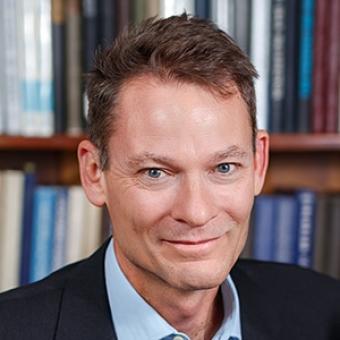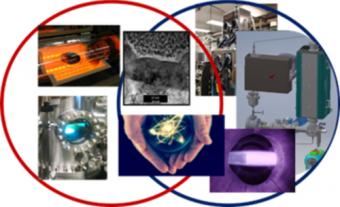New composite membranes could enable fusion-based energy
Mines' Colin Wolden is the lead investigator on the new $1.4 million DOE-funded project with Idaho National Laboratory
Researchers at Colorado School of Mines and the Idaho National Laboratory have been awarded nearly $1.4 million in U.S. Department of Energy funding for the development of composite membranes for efficient tritium extraction in fusion power plants.

Fusion has the potential to be an unlimited carbon-free power supply, said Colin Wolden, professor of chemical and biological engineering at Mines and lead investigator on the project.
“Fusion is not unlike the processes that occur in the Sun – tritium and deuterium, isotopes of hydrogen, fuse together to create helium, which is accompanied by a very small loss of mass but an enormous release of energy in accordance with Einstein’s famous relation E = mc2,” Wolden said. “This heat can be harnessed and used to run steam turbines in power plants instead of burning coal.”
To sustain the fusion process, though, tritium, a radioactive isotope with a short half-life, must be continuously generated, purified and recycled. Moreover, to ensure health and human safety, there must be negligible environmental release of the hazardous chemical.
“The fusion reactions occur in a plasma, which require significant energy to create and sustain, but fusion systems are approaching the tipping point where they’re beginning to generate more power than they’re being supplied,” Wolden said. “However, a critical challenge facing the practical implementation of fusion power is the effective and safe management of tritium.”
Wolden and Mines collaborator Doug Way, professor emeritus of chemical and biological engineering, have developed composite metal membranes for high-temperature hydrogen separations employed in conventional petrochemical refining operations. These dense metal membranes purify hydrogen isotopes from impurities with perfect selectivity, critical for tritium-related applications.
In this project, advanced interface engineering techniques such as atomic layer deposition and reactive sputtering will be used to adapt the membrane technology to the unique constraints of the fusion environment, including exposure to plasmas and liquid metal mixtures.

The goal is to enable lower cost and safer fusion energy systems by eliminating major fuel cycle components and reducing tritium inventory, release and required breeding ratios.
To obtain tritium for a fusion reaction, it must be bred from lithium via a nuclear reaction in a component called the breeder blanket. However, only approximately 1 to 2 percent of the material undergoes fusion. The remainder is routed to extensive separation units collectively called the tritium plant.
Also collaborating on the project is the Fusion Safety Program at Idaho National Laboratory (INL), including Mines alum Thomas Fuerst PhD ’18. INL will validate the leading membranes developed at Mines using the state-of-the-art facilities within its Safety and Tritium Applied Research (STAR) facility.
“At INL, we are investigating membrane technology to extract tritium from the breeder blanket as well as separate tritium directly from the reactor exhaust, which will provide improved efficiency and safety streamlining the current tritium fuel cycle,” Fuerst said. “We look forward to the collaboration with Mines as these advanced composite membranes may provide the answer.”
Funding for the project comes from the Galvanizing Advances in Market-aligned fusion for an Overabundance of Watts (GAMOW) program, which is jointly sponsored by the DOE’s Advanced Research Projects Agency-Energy (ARPA-E) and the Office of Science–Fusion Energy Sciences (SC-FES).




